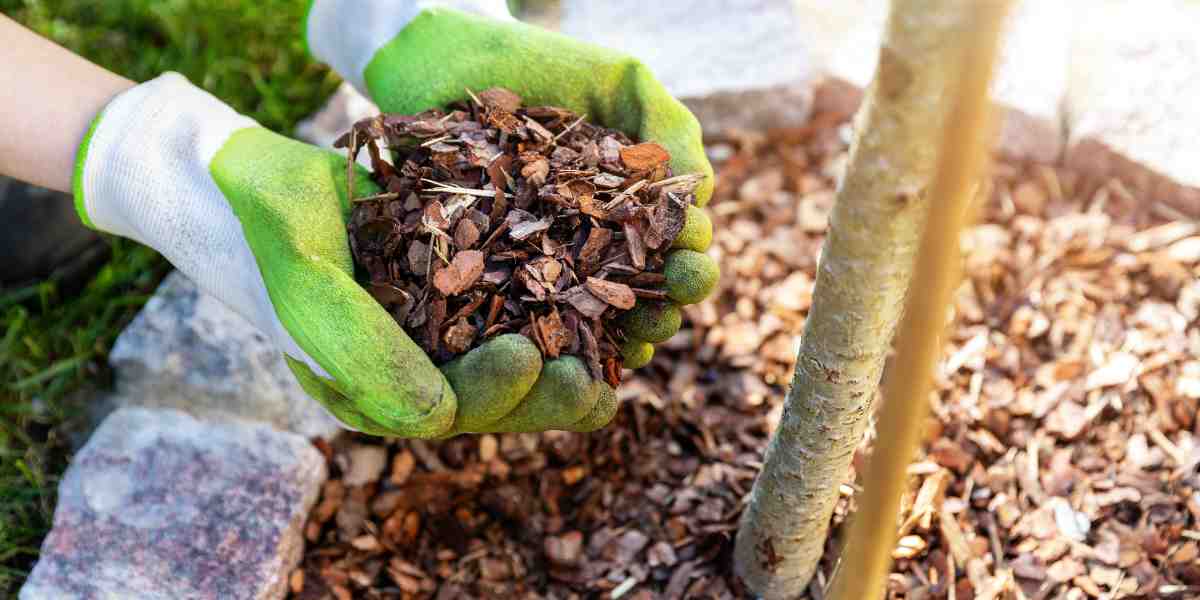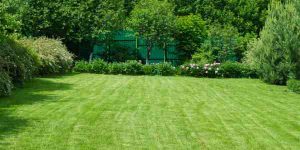Harnessing the Power of Mulching

Harnessing the Power of Mulching: Spring Tips and Techniques by Impact Landscapes
As spring breathes new life into our outdoor spaces, homeowners and landscapers alike turn their attention to revitalizing their gardens and landscapes. One essential practice that should not be overlooked during this season is mulching. Mulch serves as a protective blanket for your soil, offering a multitude of benefits that contribute to the health and beauty of your landscape. In this blog post, we’ll explore the many advantages of mulching in spring and provide expert tips and techniques to help you make the most of this essential landscaping practice.
The Benefits of Mulching:
Mulching offers a myriad of benefits for your garden beds, trees, shrubs, and other landscape features. Here are some of the key advantages:
Moisture Retention:
One of the primary benefits of mulching is its ability to retain moisture in the soil. During the warmer months of spring and summer, evaporation rates increase, leading to dry and parched soil. Mulch acts as a barrier, reducing moisture loss and helping to keep your plants adequately hydrated, even during dry spells.
Weed Suppression:
Mulch serves as a natural weed barrier, preventing weed seeds from germinating and competing with your desirable plants for water, nutrients, and sunlight. By keeping weeds at bay, mulch helps to maintain a tidy and weed-free landscape, reducing the need for manual weeding and chemical herbicides.
Soil Temperature Regulation:
Mulch acts as an insulating layer, helping to moderate soil temperatures throughout the changing seasons. In spring, mulch helps to warm the soil, providing a conducive environment for seed germination and root growth. As temperatures rise in summer, mulch provides shade and insulation, preventing the soil from overheating and protecting plant roots from heat stress.
Soil Health Improvement:
Over time, organic mulches such as wood chips, shredded bark, or compost break down and decompose, enriching the soil with valuable organic matter and nutrients. This process improves soil structure, enhances microbial activity, and fosters a healthy and fertile growing environment for plants.
Erosion Control:
Spring rains can lead to soil erosion, especially on sloped or bare areas of your landscape. Mulch helps to stabilize soil particles, reducing erosion caused by wind and water runoff. By preventing soil loss, mulch helps to preserve the integrity of your landscape and protect against erosion-related damage.
Expert Tips and Techniques for Mulching in Spring:
Now that we’ve explored the benefits of mulching, let’s delve into some expert tips and techniques to help you mulch like a pro this spring:
Choose the Right Mulch:
Select a mulch material that suits your landscape needs and preferences. Organic mulches provide additional benefits as they decompose, while inorganic mulches like gravel offer long-lasting weed suppression and erosion control.
Apply Mulch at the Right Depth:
Aim for a mulch depth of 2-4 inches when applying mulch to garden beds and around trees and shrubs. Avoid piling mulch against plant stems or tree trunks, as this can promote rot and pest infestations.
Mulch Around Newly Planted Trees and Shrubs:
Mulching newly planted trees and shrubs helps to conserve moisture, suppress weeds, and protect young plants from temperature fluctuations. Leave a small gap between the mulch and the plant stem to prevent moisture buildup and potential rot.
Replenish Mulch as Needed:
Mulch naturally breaks down over time, so it’s essential to replenish it periodically to maintain its effectiveness. Check your mulch layer annually and add additional mulch as needed to maintain the desired depth.
Consider Mulch Color and Texture:
Choose mulch colors and textures that complement your landscape design and aesthetic preferences. Dark-colored mulches like shredded bark or cocoa bean hulls absorb heat and help warm the soil, while lighter-colored mulches like pine straw or cedar chips reflect sunlight and keep the soil cooler.
Mulching is a simple yet powerful landscaping practice that offers numerous benefits for your garden beds, trees, shrubs, and overall landscape health. By understanding the advantages of mulching and implementing expert tips and techniques, you can harness the power of mulch to create a thriving and beautiful outdoor space this spring.



